Ask John: What Were the Best TV Anime of 2011?
Question:
What have been John’s best and worst anime picks for 2011, and what is he most looking forward to watching in 2012?
Answer:
Given that there are two questions presented, and answering the first alone is substantial, I’ll address the later question separately early next year.
As per my habit, not for recognition or praise, I try to sample as much of each year’s new TV anime as I can just to educate myself about the current state of the anime industry and learn first-hand what new anime are actually like. By my rough count, 2011 saw the premieres of 147 unique television and web anime series and specials. I’m consciously excluding Ad Lib Anime Kenkyu because I classify it a live-action program rather than an anime. I’m also excluding Inumarudashi because I can’t confirm whether it actually did have a TV anime series. Titles including Honto ni Ata! Reibai-sensei and Genki!! Ekoda-chan are segments of Yuruani?, not separate, self-contained shows. So among those 147 titles, I’ve been fortunate to have watched a full episode of 139 of them. I’m aware that sampling one episode doesn’t create a comprehensive appreciation of a complete series, but in many cases sampling one episode is sufficient to provide a functional impression of a show. So I can’t authoratatively and comprehensively critique the entire year’s total of new anime, but I can express my personal perspective on this year’s TV anime. I base my selections on objective cinematic quality, not necessarily popularity. Rather than limit my selections to some arbitrary number, I’ll nominate the shows I believe deserve mention. With so many new anime this year, a slightly larger number of top-shelf titles seems appropriate.
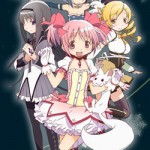
Puella Magi Madoka Magica appeared almost out of nowhere and literally took anime by storm, shocking viewers out of complacency, enthralling with equal measure of fascination and horror. Director Akiyuki Shinbo’s distinctive visual design has been evident in anime since the early 1990s, but in Madoka Magica it was not only rendered skillfully, it was complimented by the effective contrast of Ume Aoki’s character designs. Gen Urobuchi’s script revolutionized the magical girl genre by simply extending the genre’s tropes to their terrifying logical conclusion, simply going where no other anime had ever dared to go before. The stellar complexity and depth of visual design which included even actual narratively relevant runes and foreign scripts in the backgrounds, combined with an emotionally devestating narrative positioned Madoka Magica as a masterpiece that went far above and beyond the everyday expectations of conventional anime. This is a show which will resonate and serve as a landmark in anime history for years and decades to come.
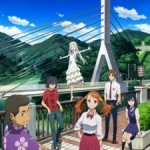
Very closely rivaling the emotional and narrative impact of Madoka Magica is the stylistically opposite Ano Hi Mita Hana no Namae o Boku-tachi wa Mada Shiranai. This tender slice-of-life drama about teens forced to confront their own feelings of lonliness and guilt surrounding the accidental death of a close friend is a heartrending yet hopeful story about love and redemption. Although the characters are probably nothing like people we know, every one of them feels entirely real. The honesty with which they face themselves and their relationships with each other is incisively painful but absolutely necessary and ultimately cathartic and healing. AnoHana is a beautiful show, both visually and narratively, that dives deep into the churning dark pits of emotional suffering in order to emerge whole and stronger. While the story and character development revolve around the show’s fictional characters, the journey takes viewers along on an equally tumultuous, ultimately rewarding emotional venture.
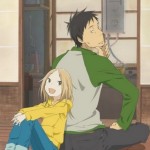
The Usagi Drop slice-of-life series serves as a reminder that anime doesn’t need fan service, fantastical settings, complex and convoluted narratives, and spectacular action to be satisfying. Usagi Drop is a very simple story illustrated with great charm and humanity. The characters all feel real and believable. There are no villains or even antagonists, just everyday people facing the humors and difficulties of routine life. This quiet show reminds viewers of the simple pleasures of life: the fun of taking a walk, of kind conversation, the warmth of family, the wonder of discovery, and the innocence of childhood belief. The anime’s soft, gentle animation, art design, and color setting invite viewers in and suggest a reassuring world where every difficulty can be overcome with love and human compassion.
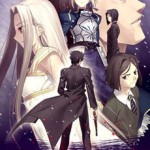
Sometimes, as shows like Seirei no Moribito, Ghost in the Shell: Stand Alone Complex, and Macross Frontier have done in the past, an anime rises to the top simply by virtue of its exceptional production. This year’s Fate/zero may be just a bit too convoluted, resulting in it seeming to contradict some of the narrative points it’s trying to establish. However, the show’s rich atmosphere and lush animation cannot go unrecognized. Fate/zero practically embarasses other TV anime with its feature film caliber art design, fluid animation, and elaborate choreography. Sequences like Lancer & Saber’s extended battle are more dynamically animated in this TV series than even action sequences in typical big budget movies. Fate/zero is not without its flaws, including hideous looking character design in episode 11 and an overbearing pretentiousness, especially in the first episode. But like an 800 pound gorilla in the room, the series just can’t be overlooked.
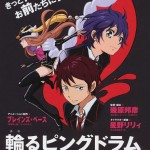
Mawaru Penguindrum is dense, convoluted, highly symbolic, and, honestly, a task to watch. However, it’s a rare anime which can be so challenging to watch because it demands so much intellectual and interpretative attention from the viewer. Penguindrum bursts with creativity and originality. In a modern era characterized by otaku longing for shows that don’t pander or rely on tired tropes and popular themes, Mawaru Penguindrum delivers exactly what otaku want, to such an extent that it’s over plentiful. Mawaru Penguindrum isn’t an easy show to watch; it’s even more difficult to comprehend. However, the very existance of such a dynamic, visually stunning, complex and dense literary narrative in animation form is reason for respect and applause. Penguindrum is absolutely not a show for everyone. In fact, even many of its supporters will concede that the show is difficult and convoluted viewing. But a show that succeeds in being so stylistically beautiful and narratively complex without being cliche or pretentious is special and rare.

Studio P.A. Works commemorated its tenth anniversary effectively with the original bishoujo coming-of-age drama Hanasaku Iroha. Despite a harsh first episode and some arguable narrative missteps in the early episodes, Hanasaku Iroha was a consistently attractive looking show that quickly developed into an engaging character-centric drama with plenty of passion and heart. The dynamic and diverse cast play off each other well, and the narrative does a fine job of allowing the characters to gradually reveal themselves. As characters become more familiar with each other, and viewers spend more time with the characters, the characters drop their guard and reveal their true personalities that are filled with unique quirks and foibles. The characters also genuinely mature and evolve, changing their perspectives in accordance with their growing understanding of the people around them and their own increasing recognition of their own perspectives and personalities.
![[C]](https://www.animenation.net/blog/wp-content/uploads/2011/12/1302227374-150x150.jpg)
Finally, I’d like to mention [C] THE MONEY OF SOUL AND POSSIBILITY CONTROL just for its daring to be unique. [C] may be criticized for merely shifting the tropes of Digimon into an adult setting, but the audacity to merge concepts reminiscent of Digimon with ethical philosophical debate on the responsibility of the wealthy, the degree to which external influence affects individual people’s lives, and the moral obligation to obey a personal moral code versus an order prescribed by authority make the show a fascinating example of the dynamic creativity that anime is capable of.
Particular titles from this year including Hourou Musuko, Hyoge Mono, and Level E garnered critical praise while Tiger & Bunny earned acclaim and tremendous popularity, but I think that in each of these cases, the shows I’ve nominated as best of the year are more deserving of the recognition because they’re more creative or more affecting.
Unlike some years from past memory, including 2006 & 2008 particularly, 2011 didn’t deliver any disasterous anime. Instead, this year was heavily dominated by very mediocre TV anime including C³, Dantalian no Shoka, Infinite Stratos, Kyokai Senjo no Horizon, Dragon Crisis!, Freezing, Sengoku Otome, Itsuka Tenma to Kuro Usagi, Kamisama Dolls, R-15, and Maken-ki, to name just a few. The year’s biggest disappointments were three shows which should have been much better than they actually were. Fireball Charming dramatically improved the first series’ animation but almost entirely lost the first series’ satirical, absurdist wit. After a string of good and excellent anime including Nijuu Menso no Musume, Fullmetal Alchemist: Brotherhood, Darker than Black: Ryusei no Gemini, Star Driver, and Gosick, studio BONES produced the back-to-back disappointments No.6 and Un-Go. No.6 began well but unraveled into a narrative mess filled with irelevant characters, under-developed narrative threads, and blatant homoeroticism bluntly inserted to rally fujoshi interest. Un-Go touted a celebrity staff but ended up a half-baked hybrid of supernatural horror, detective mystery, and political criticism that felt like half of its story and most of its character development was missing.
Here’s my complete list of 2011’s TV and web anime. The 8 titles in italics are the ones which I haven’t watched any of yet.
+tic Neesan [web anime]
30-sai no Hoken Taiiku
A-Channel
Ano Hi Mita Hana no Namae o Boku-tachi wa Mada Shiranai
Ao no Exorcist
Astalotte no Omocha
Baka to Test to Shokanjyu ni!
Bakuman (second season)
Battle Spirits Heroes
Beelzebub
Ben-To
BLADE
BLOOD-C
Boku wa Tomodachi ga Sukunai
Buso Chugakusei Basket Army [web anime]
Buso Shinki Moon Angel [web anime]
[C] THE MONEY OF SOUL AND POSSIBILITY CONTROL
C3 -C Cube-
Card Fight! Vanguard
Chi-Sui Maru 2nd Season
Chibi Devi
Chihayafuru
Copihan [web anime]
Cross Fight B-Daman
Danboru Senki
Dantalian no Shoka
Deadman Wonderland
Denpa Onna to Seishun Otoko
DD Hokuto no Ken
Digimon Xros Wars: Toki wo Kakeru Shounen Hunter-tachi
Dog Days
Dororon Enma-kun Meramera
Dragon Crisis!
Duel Masters Victory
Fate/Zero
Fireball Charming
Fractale
Freezing
Fujilog
Ganbare! Natto-san
gdgd Fairies
Gintama’
GOSICK
Guilty Crown
Gyakkyo Burai Kaiji: Hakairoku-hen
Hanasaku Iroha
Happy Kappy
Hello Mainichi Kaasan
Hen Zemi
Hidamari Sketch x SP
Hidan no Aria
High Score
Hoshizora e Kakaru Hashi
Houkago no Pleadies [web anime]
Hourou Musuko
HUNTER×HUNTER
Hyoge Mono
THE IDOLM@STER
Ikoku Meiro no Croisée
IS
Itsuka Tenma no Kuro Usagi
Jewelpet Sunshine
Kaitou Tenshi Twin Angel ~Kyun Kyun Tokimeki Paradise~
Kami Nomi zo Shiru Sekai II
Kamisama Dolls
Kamisama no Memo-cho
Kampfer fur die Liebe
Kayochu
Kido Senshi Gundam AGE
Kimezo no Kimarimonku Ja Kimaranee. Featuring Sabu-Otoko
Kimi ni Todoke 2nd Season
Kimi to Boku
Kono Danshi Uchuujin to Tatakaemasu [TV special]
Kore wa Zombie Desu ka?
Kyokai Senjo no Horizon
Kyousogiga [web anime]
Last Exile: Ginyoku no Fam
Level E
Lupin III: Chi no Kokuin Eien no Mermaid [TV special]
Mai no Maho to Katei no Hi [web anime]
Maji de Watashi ni Koishinasai!
Maken-ki!
Manyu Hikencho
Mariaholic Alive
Mashiroiro Symphony
Mawaru Penguindrum
Mayochiki!
Metal Fight Beyblade 4D
Mirai Nikki
Mitsudomoe Zouryouchuu
MonHun Nikki Girigiri Airu-mura G
Morita-san wa Mukuchi
Moshi Koko Yakyu no Joshi Manager ga Drucker no Management o Yondara
Natsume Yujincho San
Nekogami Yaoyorozu
Nichijou
Nihon Omoshiro Mukashi Banashi
NO.6
Nurarihyon no Mago: Sennen Makyo
Nyanpire the Animation
Oniichan no Koto Nanka Zenzen Suki ja Nai n da kara ne
Oretachi ni Tsubasa wa Nai
Otona Joshi no Anime Time
Paperman Battle 1 [web anime]
Peeping Life -The Perfect Extension-
persona4 the ANIMATION
Phi-Brain Kami no Puzzle
Pretty Rhythm Aroura Dream
Puella Magi Madoka Magica
R-15
Ring ni Kakero 1: Sekai Taikai Hen
Rio RainbowGate!
Ro-Kyu-Bu!
Sacred Seven
Seikon no Qwaser II
Sekaiichi Hatsukoi
Sekaiichi Hatsukoi 2
Sengoku Otome ~ Momoiro Paradox
Sengoku Paradise -Kiwami-
Shakugan no Shana III -Final-
Shiawase Haitatsu Taneko
Shinryaku!? Ika Musume
Showa Monogatari
SKET DANCE
Sockies Frontier Quest
Softeni
STEINS;GATE
Suite Precure
Suzy’s Zoo Daisuki! Witzy
Tamayura ~hitotose~
Tantei Opera Milky Holmes Tokubetsuhen
Tennis no Oujisama: Best Match
TIGER & BUNNY
Tonno to Issho Gantai no Yabou
Torico
Tottoko Hamutaro Dechu
UN-GO
Usagi Drop
Uta no Prince-sama ~ Maji LOVE 1000%
Wolverine
WORKING’!!
X-Men
Yondemasuyo Azazel-san
Yugioh Zexal
Yumekui Merry
Yuruani?
Yuruyuri
Add a Comment
You must be logged in to post a comment.


I think you have to watch more Tiger and Bunny. I think that you have made predictions about what this show is that will be proven false as you go along.
This is pretty much my list as well
It’s pretty close to my list, too. I’d just add Chihayafuru and Kaiji S2.
So, no love for TIGER & BUNNY? It was the only real “action anime” of the year…
Quite close to my list as well. Not quite about there being no disastrous anime for 2011, though – if we’re talking specific titles, I’m pretty sure that Manyuu Hikenchou set the bar at an all-new low.
I can respect distaste for the concept of Manyuu Hikencho, but the show’s production values were too high for it to qualify as a disaster. I’d cite a title like Maken-ki as a better example of a “Manyuu Hikencho-style” show that’s genuinely bad.
People hate it just on moral grounds. It definitely does not look bad, but the story (of what I’ve seen) isn’t much. Again, it isn’t bad, but there’s nothing there of note. It’s just a silly anime that gets ridiculous with breasts.
John you have a very solid list up there. For the most part my list of best anime in 2011 compliments yours in a lot of ways. Madoka Magica is definitely an evolutionary title that will be remembered for years to come. Ano Hana was also definitely one of the most engrossing titles that came out last year.
However, it occurs to me you completely missed on covering Steins;Gate on this post or the Dec 30th podcast. It is undoubtedly one of the biggest title that came out last year, if not the best. I really can’t think of anything bad about the show. Time travel might sound like a clichéd trope but it’s a subject that can make a good show great if done right. After the lighthearetdness of the first couple episodes, the lab-mem started to get carried away by their continuous success on their experiments, and finally driven to the point of no return by their curiosity. But I’m more interested on how are you going to describe the show overall.
I couldn’t get past the first few episodes of Steins;Gate. I respect the production design, but the tone and characterizations of the first few episodes aggravated me so much that I couldn’t force myself to continue watching.